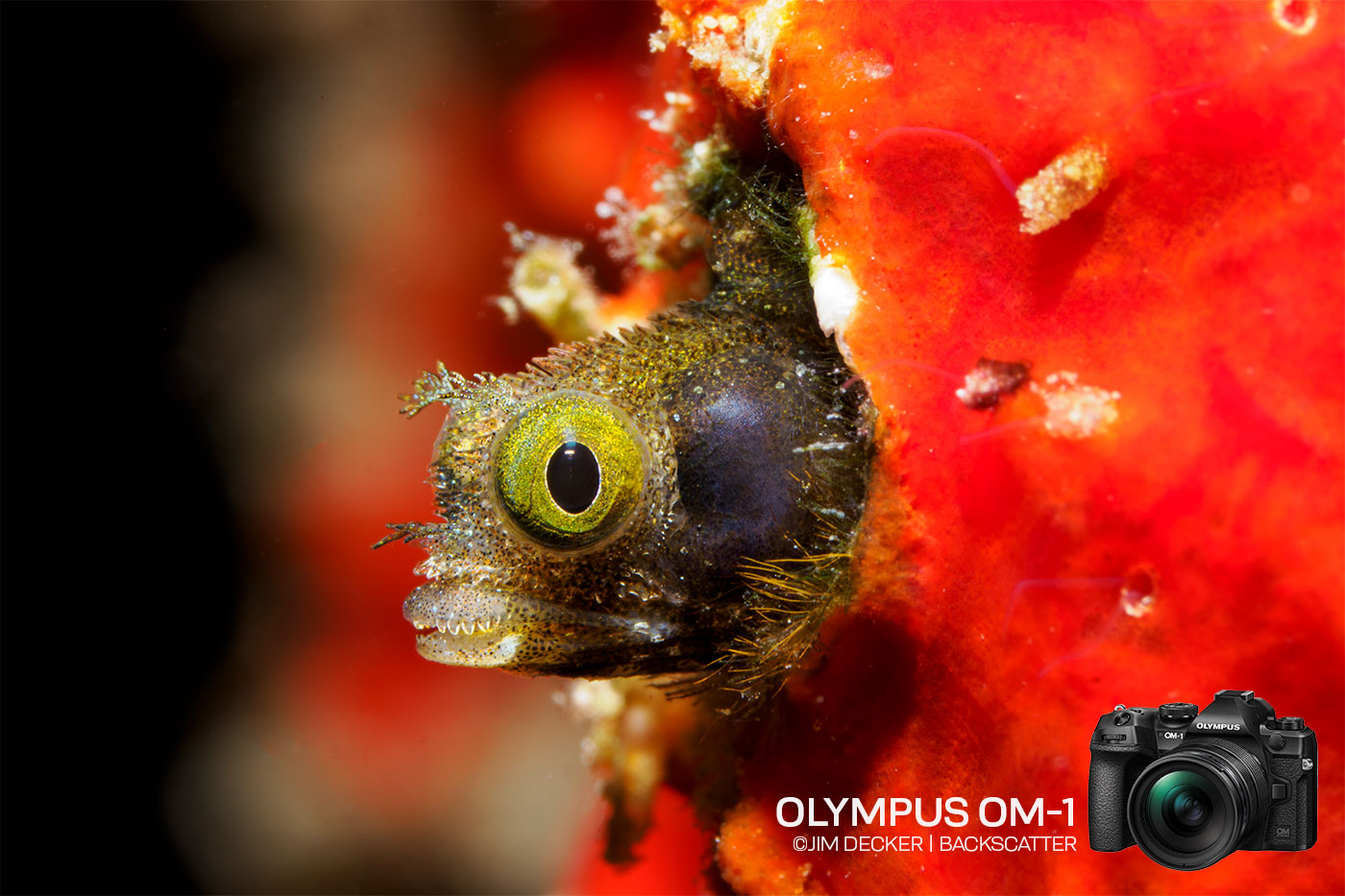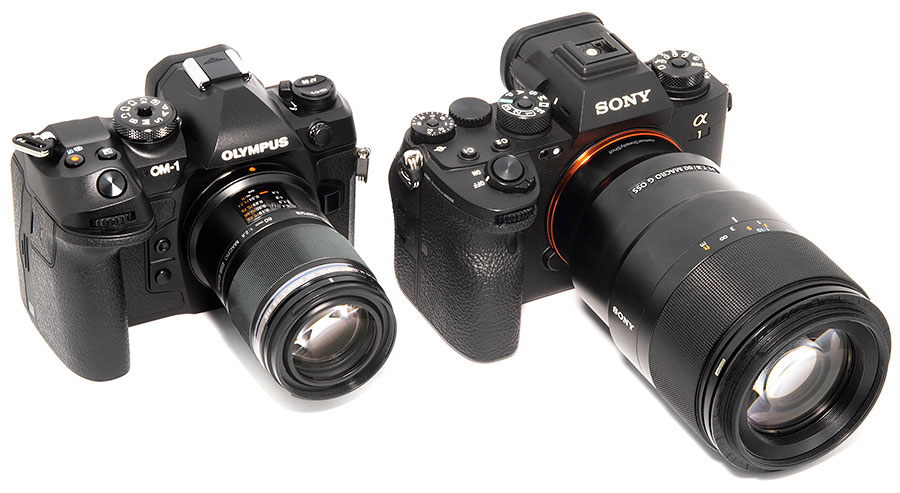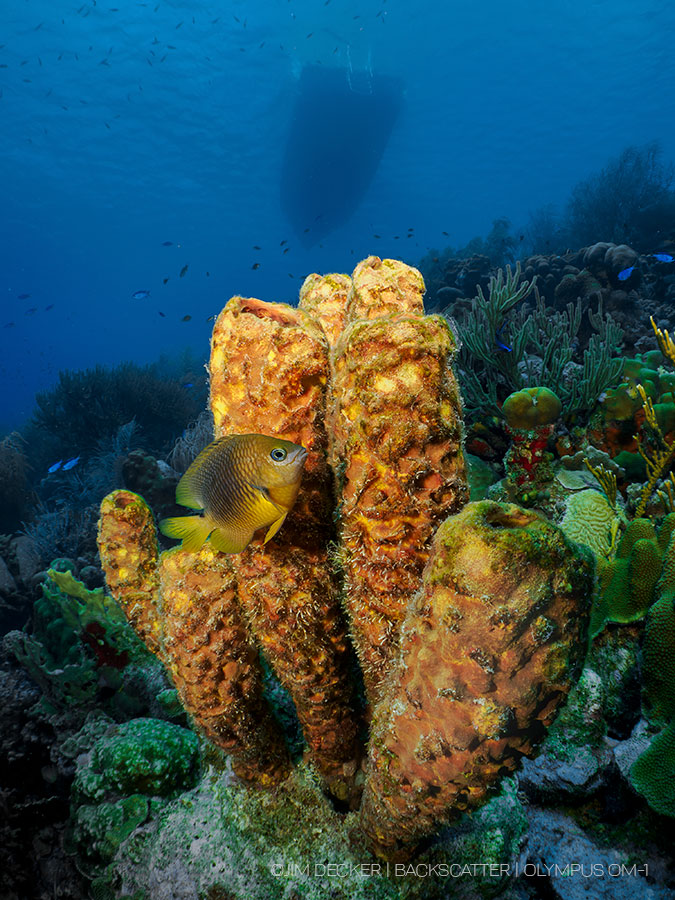
By: Jim Decker
The Olympus OM-1 camera is the latest top-of-the-line flagship Micro 4/3 camera from Olympus/OM Systems. We took the new Olympus OM-1 mirrorless camera underwater to the Digital Shootout in Bonaire for a complete review and performance test. With crazy specs of shooting 50 frames per second in RAW, a new autofocus system, and 4K60p video, can this camera deliver or even outgun the full-frame big boy cameras? In short, it’s a surprisingly mixed answer, read on for the details.
Why a High-End Micro 4/3 Camera?
Micro 4/3 cameras from Olympus and Panasonic have a sensor size half that of a full-frame. Size-wise the camera is only a tiny bit smaller than a full-frame Sony a1. The resolution on the Olympus OM-1 is 20MP, which the Sony a1 is at 50MP.Which begs the question, why go with this camera when it’s the same size as a full-frame? The answer is in the lenses of the Micro 4/3 system.

While the camera body of the Olympus OM-1 is about the same size as the full-frame Sony a1, the lenses of the 4/3 system are significantly smaller and lighter.
Since the sensor is 1/2 the size of a full-frame, the lenses are so much smaller and lighter too, most times less than half the size and weight. It’s no wonder that higher-end 4/3 cameras are a top choice among the birding and safari community.
For us underwater shooters we get smaller housings and smaller ports due to the smaller size 4/3 lenses. This will make the Olympus OM-1 appreciably smaller than a full-frame camera system when outfitted for underwater duty. For those who have travel size as their top concern, this system wins hands down against a full-frame setup.
Now that we’ve explored that size is a major driving factor for this camera let’s check some of the top specs.
Image Quality With a 20MP Sensor
The photos that are coming out of the camera look great. Very good sharp detail. The colors look spot on for underwater photography. For wide shots, I used the Olympus 8mm fisheye, which is from their pro line of lenses and exhibits excellent image quality. For macro, I used the Olympus 60mm Lens. Olympus has always had high-quality optics and they are a good match for this camera.A resolution of 20MP is good for most shooters. It’s more than enough resolution for social media, website use, and pretty much any electronic final delivery format. It could be argued that even 20MP is more than enough for these purposes. A 4K TV is only 8MP.

Despite the camera only having a 20MP resolution, this image captures super sharp detail, especially when viewing at 1:1 on the damsel fish's scales.
Olympus OM-1 | Olympus 14-42mm EZ | AOI UWL-09 PRO Lens | 1/125 | ISO 200 | ƒ11
Why would you need more resolution? If you plan on making larger high-quality prints or are cropping verticals out of horizontal shots. Even then, unless you are going billboard size, it will look decent. And even at billboard size seen at 15 feet or 15 miles an hour you would never be able to see the difference.
Of course, the ultimate answer for wanting more resolution is because you can. Full frame sensors will have better image quality and detail than a 4/3 size sensor, but you can definitely get good images out of the Olympus OM-1 that most people will be thrilled with. We have large prints hanging up in Backscatter, some of which were shot with older lower resolution cameras and look great. If you’re a pixel peeper like me, certainly go for more resolution, but for a lot of others, this will fit the bill.



